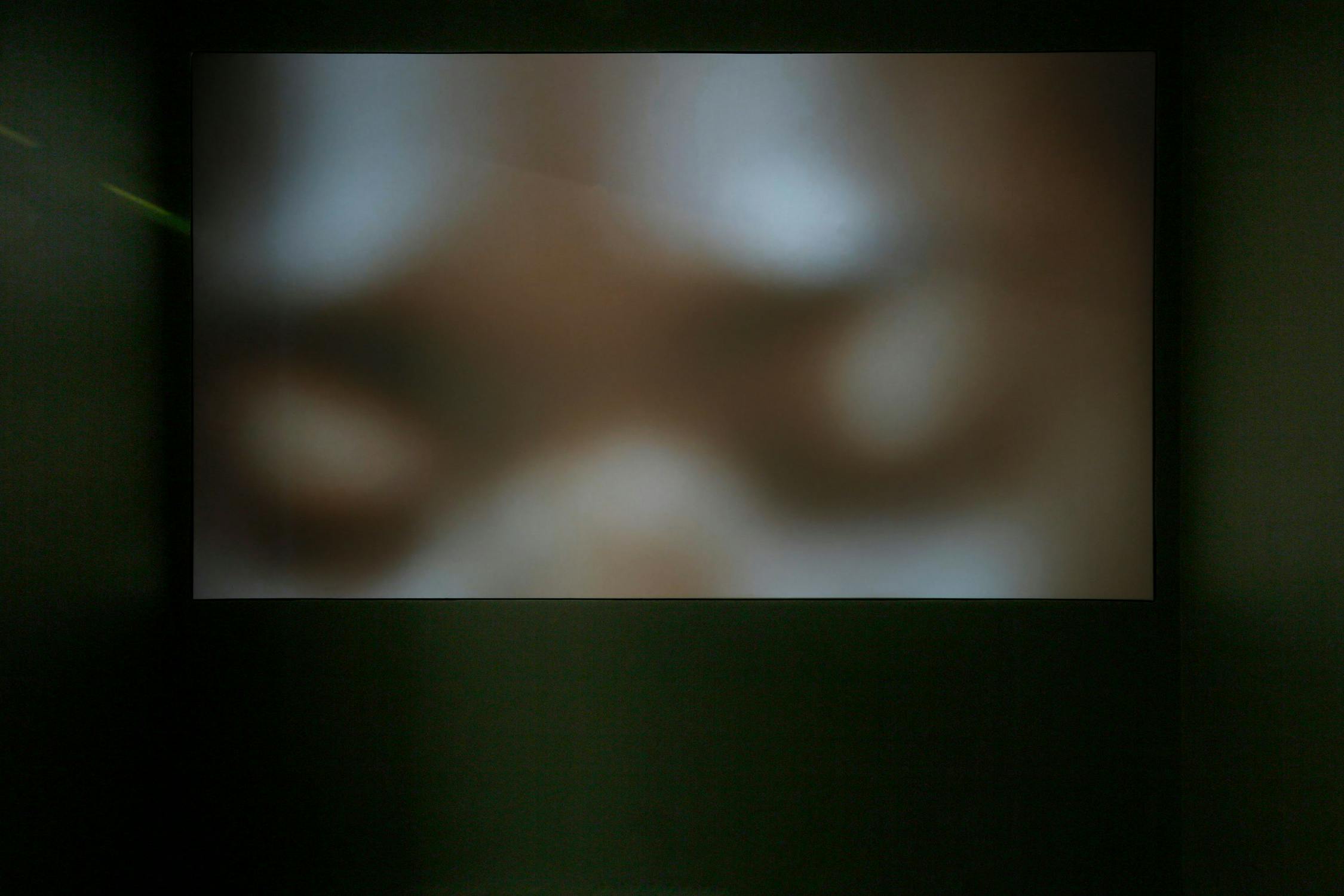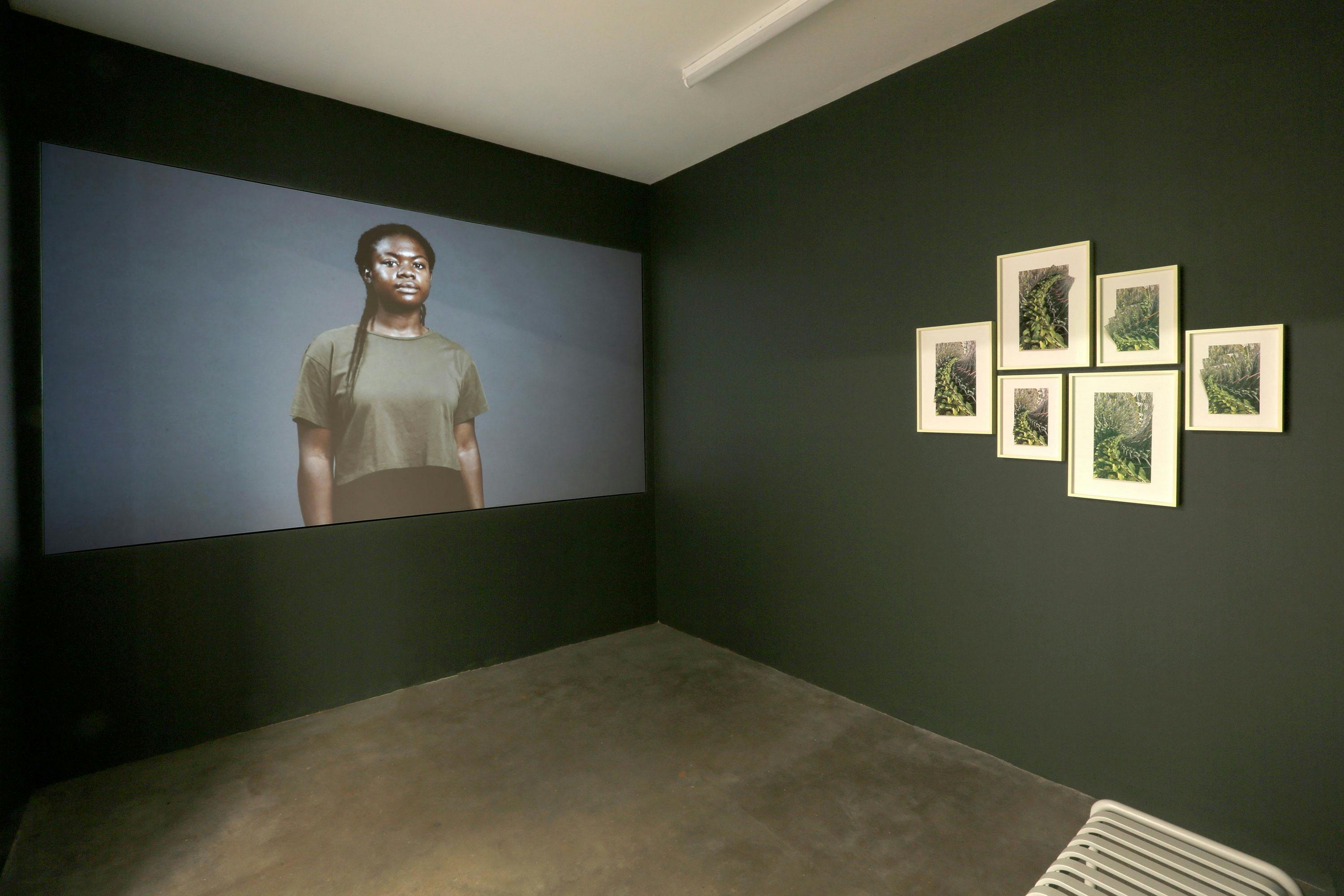- Alice Hattrick, “What doesn’t happen”, Tank Magazine, Issue 88 (2021)
- Alison Kafer, Feminist, Queer, Crip, Bloomington: Indiana University Press (2013)
- Portrait of a patient, H. W. Diamond, salt print c.1855 © Royal Photographic Society Collection, Victoria and Albert Museum, London

On 'Here, Now' by Lisa Slominski
August 2023
'Not all of us are governed by clock time. Not all of us can keep up or “keep time” with the rest of the orchestra.'—Alice Hattrick [1]
Jo Longhurst’s practice explores the systemic and structural conditions of being human. She questions how individuals and communities exist in the world: how are we shaped, confined, celebrated and restricted by society? And how do we inform, challenge and, at times, change these same cultural conditions? Previous series include The Refusal which examined competitive dog showing and complications of human/nonhuman relationships, and Other Spaces, an intimate study of elite gymnasts.
Crip is Longhurst’s new body of work encompassing research, collective activity, collage and moving image. It is a pivotal shift in the artist’s work by inserting herself within the subjects of her examination - as a woman living with chronic illness. This assertion within Longhurst’s practice ignited her engagement with “crip time”.
Crip time is a theory at the intersection of feminist, queer, and disabilities studies examining how the disabled, neurodivergent and chronically ill experience time differently than those society considers able-bodied and able-minded (normative). It also investigates the invisibility/erasure of the disabled narrative in history and futurity. Academic Alison Kafer articulates that “rather than bend disabled bodies and minds to meet the clock, crip time bends the clock to meet disabled bodies and minds”.[2] She continues that crip time means more than an extension or slowing down of time; instead, it is a complete reorientation to time.
This proposition of reorienting and flexibility seems particularly apt for Longhurst’s conceptual use of bindweed in Crip. Bindweed is a climbing vine commonly known for its invasive strength [tenacity] and persistence. Beautiful with trumpet-like blossoms, their vines bend and curve, spiralling anti-clockwise towards the sun; but bindweed is deemed undesirable. It is considered a nuisance. It is a target of removal. The metaphor of the anti-clockwise movement and tenacity of the marginalised bindweed speak to the reorientation concept of crip time. In Crip, a series of collages repeat, tesselate and spiral a single photographic image of bindweed into one-of-a-kind compositions. Longhurst’s collage process further probes the ideas of assumption and recognition by combining physical and digital print methods that render even simple shadows in a place of in-betweenness.
Central to Crip is the moving image work Here, Now (2023). A silent looping video, images of single bodies lying horizontally slowly come into focus with such stillness it could be a photograph until turning, uncurling or twisting alerts the viewer that each of them is moving, is alive. Others are standing - moving fast, moving slow. Moments of full colour - organic hues of rust, green and grey - flood the composition. As the bodies intersect with bindweed imagery, a subtle transformation is observed. Faces turn towards the camera, eyes open, gazes lock into the camera.
The ideas for Here, Now emerged parallel to Longhurst’s study of an 1855 asylum photograph of a woman by British psychiatrist Dr Hugh Welch Diamond, superintendent of the female department of the Surrey County Asylum.[3] This photograph appears emblematic of history’s entangled authority in defining women in relation to their bodies and minds. Via Longhurst’s expanded research, a collection of 19th-century portraits of women defined as “hysteric” presented a battleground for agency; where female patients were challenged and overtaken by the photographer. The framing, pose and manipulation were out of the subject’s control.
The process of “documenting illness” resonates with Longhurst in relation to her own condition which is typically not visibly observable. Considering her own disabled position led to the shaping of an informal collective of others experiencing unseen disability, conditions and illnesses. Known as the unseen collective, it is an intergenerational group of mostly women and non-binary creatives that informed and are featured in Here, Now. Participants in the collective include writer Alice Hattrick, author of Ill Feelings (Fitzcarraldo Editions, 2021) and co-producer of Access Docs for Artists; Natasha Trotman, an award-winning inclusive designer, researcher and artist, and ActionSpace artist Ophir Yaron. Their involvement included sharing experiences (both as a collective and individually with Longhurst), considering how their physical positioning in the video may claim (or challenge) their circumstances, and as the subjects, alongside Longhurst, in Here, Now. The outcome is a powerful and alluring moving image work. It does not overtly illustrate disability, illness or Longhurst’s personal narrative but instead emulates the struggle for and affirmation of agency.
Lisa Slominski, August 2023.
Lisa Slominski is an American curator and writer based in London. Her work explores activations of access and inclusion in the current art discourse and examines the historical framework of underrepresented artists with a particular interest in agency. Recent articles include The Spiritual in Art is Back, Again, and Artists Consider the Concept of Care for Hyperallergic. She is the co-founder of Art et al. – an inclusive international curatorial platform which focuses on international collaboration between arts professionals with and without disability. Her book, Nonconformers: A New History of Self-Taught Artists (Yale University Press, 2022) presents an international history of artists often identified as ‘self-taught’ advocating for a nuanced understanding of art often challenged by the establishment.
Jo Longhurst, Here, Now (2023). Installation view at Studio Voltaire, London. Images courtesy of the artist.

